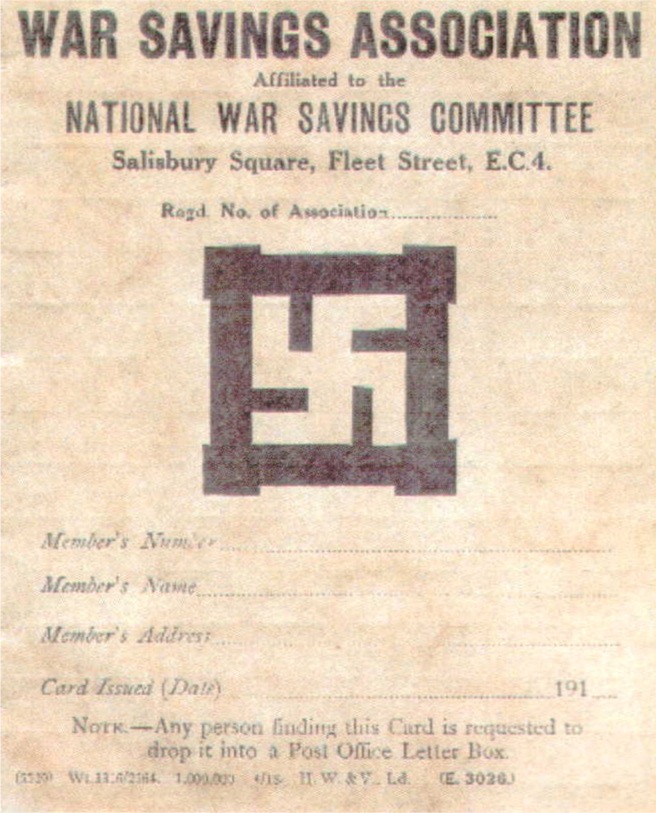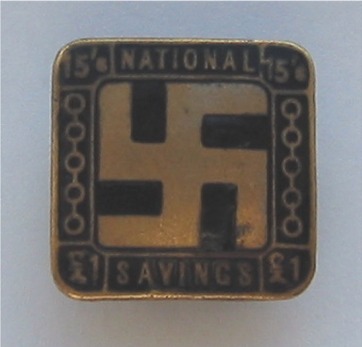National Savings::
|
The National Savings Movement
established during the First World War used the swastika in its
advertising and also on the badges awarded to the administrators of the
savings scheme in recognition of their service to the nation. The
swastika was originally from Tibet and was the symbol of the god Agni,
the god of Fire, of Creation and whether facing left or right, with
straight arms or curved, the swastika was always a symbol of good
fortune.
The swastika was worn as a talisman by German troops in the First World
War and used in jewellery designs in America, on the robes of the Druid
priests and of course as a logo for the National Savings Movement. The
swastika became the symbol for militant German nationalism and was
adopted in time by the NSDAP - the Nationalsozialistiche
Deutsche Arbeiter Partei or NAZI party.
In early 1939, the National Savings Movement realised that the swastika
was now an inappropriate symbol for its organisation and adopted the
image of St. George killing the dragon instead (this was later
supplemented with the Royal Crown).
|

War Savings Association Card |
 |
Two versions of the National Savings badge
were made, one with a pin for ladies and one as a lapel badge. The badge
shown here is the lapel version and is part of my collection of badges.
The badge is shown here larger than life and actually measures 18mm x
18mm (or 0.7 inches square). The badge is numbered on the lapel
fixing - 638232 and the manufacturers name is stamped on the back of the
badge itself - "Thomas Fattorini", "Bolton". |
| |
|
| The badge was manufactured by Fattorini - a
company that made other badges and medals for the British government in
both World Wars - and has a registration number on the back. The company
exists to this day, still making badges. If you are interested in what
products Fattorini have to offer today, click
here - a link will open in a new window. |
 |
|

